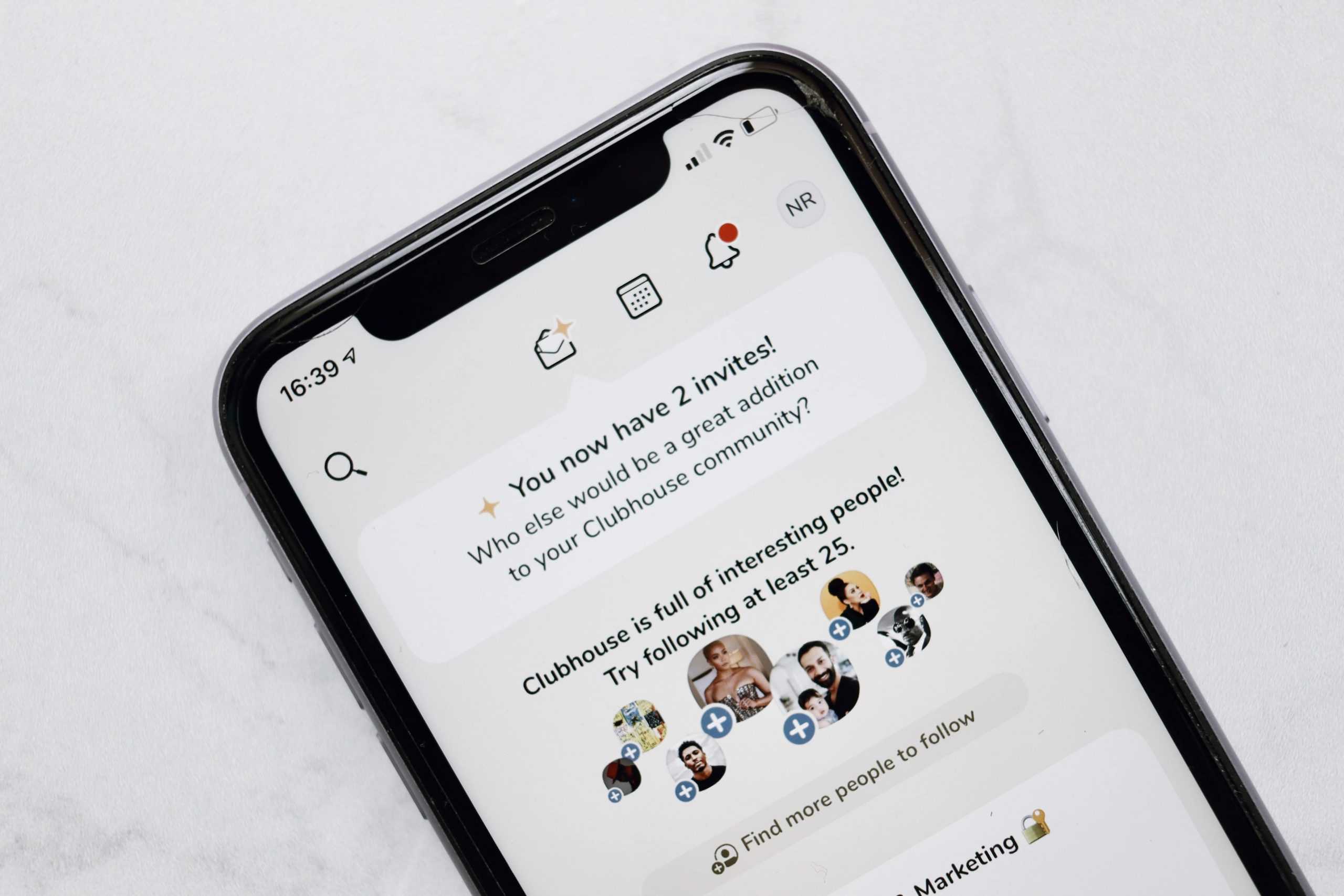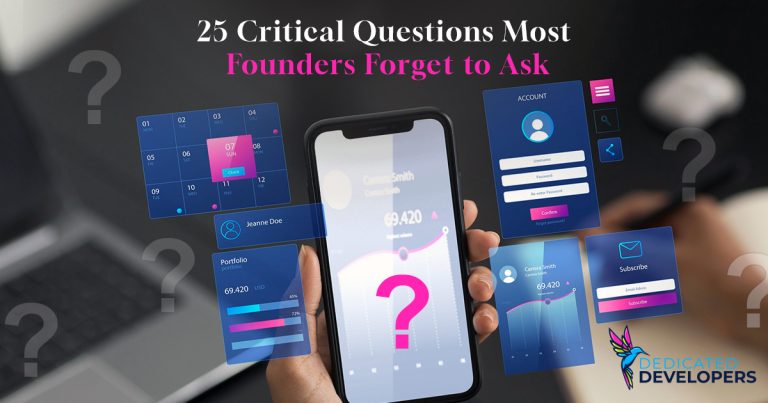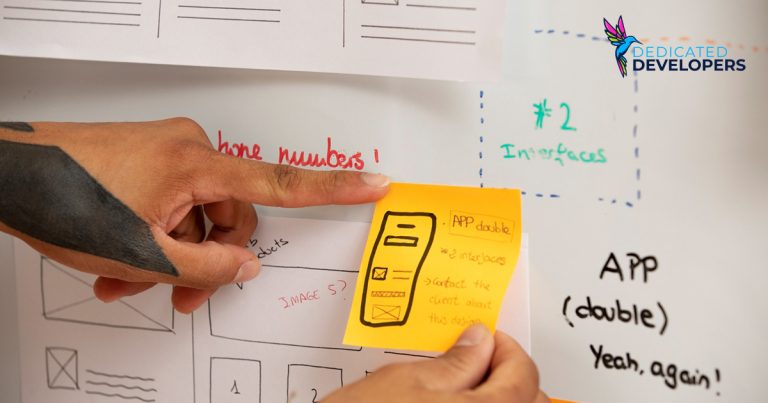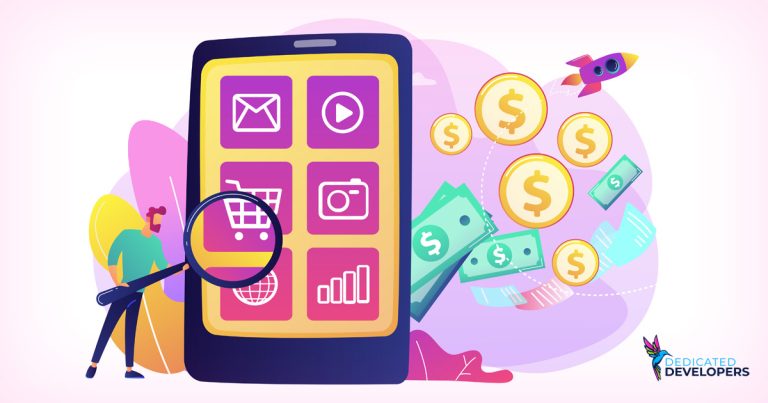How to build an Audio Voice Chat App like Clubhouse

Clubhouse was developed by Alpha Exploration Co. and launched in March 2020. In less than two years, the app has achieved a valuation of $4 billion! The founders, Rohan Seth and Paul Davison, launched this app during the peak of the COVID-19 pandemic, but it really gained popularity when technology entrepreneur Elon Musk joined the app and tweeted about it.
Clubhouse has a unique UI model. Instead of building a visual presence or soliciting “likes” or “follows” like other social media apps such as Facebook, Twitter, or Instagram, Clubhouse has created a place where individuals can come, meet new people, and have real-time interaction with one another through audio.
The overnight success and popularity of Clubhouse is a sign of the vast potential of innovative social media platforms and apps. This blog is written to help you identify the details of this fantastic app and eventually guide you on how to design audio social media apps similar to Clubhouse.
Exciting features on Clubhouse that are designed to draw users
A lot of brainstorming has gone into creating an image for Clubhouse and presenting the app as such. Let us see what the founders have done differently with Clubhouse to reel users in.
1. Controlled entry keeps would-be users interested and, on their toes
Users visit clubhouse.com or joinclubhouse.com to sign up. However, the website does not give direct access to any room, and the only way to listen to or participate in audio discussions is via the app. Clubhouse offers an invite system and a waitlist option to add new members to the community, but this is only a temporary measure. The founders have already said that they intend to expand the platform’s reach in the future.
2. The road from signup to actually using the app
This integrated feature allows you to sign up/login with your email ID or other social network accounts, which accelerates the signup/login process. Only users who have received an invite can access the sign-in screen, while all other users are led to the waiting list after choosing their username.
3. New users have the best seat in the house
The first thing Clubhouse does when new users register is onboard them. New users are initially requested to set up a profile: name, username, photo, friends, interests, and notifications. Once they are onboarded, they can enter any room they like. They will be muted in all groups by default as new users, but they can unmute themselves with the moderator’s permission. If someone is the moderator, that person will be unmuted by default.
4. Customize the Clubhouse experience for new users by allowing them to choose “interests”
There are hundreds of groups on the app, so to help users choose the fitting room(s) for them, the Clubhouse onboarding experience includes an option to choose “interests.” The app presents a categorized list of hobbies to choose from. Once users choose their preferences, they will see a variety of ongoing chat rooms set up by other users for a more engaging experience.
5. Feeding users new content on a regular basis
The feed section is where users can find out what’s going on. The app will take users to various discussions that are happening everywhere, denoted as “rooms.” Users will also be able to view who is in each chat room. The feed includes the details of both current and upcoming events.
6. Helping users find the content they like through the option of “topics”
Clubhouse offers an extensive list of topics so users can find the right room(s) for them. Usually, the topics are the “tags” for the rooms. The speakers can assign topics when creating a chat room, and users can find the room using these topics. This feature makes the app experience intuitive and transparent for all.
7. Ensuring that all users have a clean and exciting experience through moderation of content
Moderation rights are critical for all platforms, whether video-based, text-based, or voice-based social apps. Therefore, the owners of the rooms must have moderating rights. Besides that, an app administrator must be able to monitor users, issue reports, and ban rooms violating the guidelines, including bullying or hate speech.
8. No compromise on audio quality since audio is the app’s USP
As an audio-based app, Clubhouse provides users with high-quality audio streaming. The app also features moderation functions and gives the owner various rights, such as accepting or denying requests to speak.
9. Taking care that users are notified about their favorite content in advance
The live talks that take place on the app can’t be recorded or archived. Therefore, users are notified when their favorite speaker or topic-based room is active. This is to ensure that they don’t miss a thing, leading to a reliable and timely reminder and notification system.
10. Keeping up-to-date with the latest developments and keeping track of activity
All user interactions are recorded in the Activity area. Here’s where they can see all the accounts they follow, recent activity in the app, and those users who have recently joined the app. They can also check which are the active clubs and what events are coming up.
11. Clubbing users by interests
All communication occurs in the chat rooms created by their respective moderators, and rooms can be set to be open to the public or private. Rooms can also be set up for a private conversation, a conversation among random people, or a presentation to the audience.
12. Keeping user information to a minimum so that the focus remains on the content
The user profile is a component that exhibits personal information. However, there’s not much information here: only the user’s name, profile photo, and an optional link to his or her Twitter and Instagram accounts.
13. Giving users freedom to follow speakers and topics they would like to hear more of
If users come across a speaker or a topic they enjoy, they can save it in their activity area (Following). The Following functionality keeps users up to date on all of the speaker’s activities or topics.
14. Building fraternity among users through ‘clubs’
The clubs are pretty much identical to groups in other social media apps. Users can join clubs that interest them, places where they can find other like-minded people and groups. These clubs also allow users to browse members, add members, and recommend conversation topics.
15. Tricks to keep users interested in using the app regularly
The ‘Following’ section offers details on upcoming open discussions. It appears as a schedule of events, complete with the speaker’s names, chats, start times, and a brief description of the events. When the event begins, users can obtain the rest of the information by selecting the bell icon.

Having read the above data, would you like to have an app like Clubhouse?
The USP of Clubhouse is its ability to combine the advantages of a live podcast with the latitude of a call-in program, where users can become a part of the conversation without any extra functionalities that might turn users off. The good news is, it is possible to build an app like Clubhouse, and you can have a similar app for your organization if you are interested. Here are a few steps on how to go about it:
Begin with market research
Launching an app without having undertaken market research is pretty much taking a shot in the dark. A winning mobile app marketing campaign is always backed up with detailed app market research.
Ultimately, you should know your product and the need for your product among the population of potential users. Market research will help you consolidate your data and give you answers for multiple challenges faced by users of similar apps.
Identify your users’ problems
Before you begin to develop an app, the first logical step is to determine how your app will address and answer your users’ problems. The most effective technique is to reach out to potential users and ask them for answers to your most important questions.
For this, social media platforms are an ideal choice (to get started). Inquire about your users’ reservations and challenges that are directly relevant to your app. Once you’ve listened to them, you’ll be able to identify commonalities.
Competitor Analysis
Another important marketing step is a competitor analysis, which includes getting particular insights into their earnings, overall web presence, and marketing campaigns. Once you understand your competitors’ weaknesses and strengths, you will have eliminated significant potential barriers to your own future marketing efforts.
Create a user-friendly and intuitive design
User-friendly means that the app is intuitive, easy to use, and simple for users. Users must be able to rely on its availability. Complexity in an app is not useful. Reliability is also important because an app cannot assist users if it contains flaws and does not function properly.
Just keep in mind that it is all about the users, so keep it basic, user-friendly, and helpful before you begin growing!
“Design is not just what it looks like and feels like. Design is how it works.” ~Steve Jobs
It’s difficult to disagree with this statement. According to research, user experience, when improved intentionally and strategically, can improve conversion rates by up to 400%. So, if you want to achieve a similar outcome for your app, you must follow the tried and tested UX design methodologies listed below:
- Plan brainstorming sessions with product and design teams to create user stories, personas, and cases.
- Be open to new ideas that pop up during discussions and brainstorming sessions.
- Discover how the app will address and solve users’ problems.
- Analyze the needs, goals, behaviors, and pain points of your targeted users.
Data encryption is equal to trust
While the expansion of social media has brought us several benefits and entirely new sectors and professions, it has also brought us concerns. For example, users will be concerned if they see that the data they share with your Clubhouse-type app is not being stored safely. Make sure your developers have a clear idea of data encryption during wireframe creation, be it a live-streaming social audio app like Clubhouse or anything else.
Best App Design Practices:
1. Build a responsive app design
2. Keep it simple
3. Stick to app design guidelines and best practices
Building a minimum viable product
A minimal viable product (MVP) is a product version with just enough features to be usable by early customers, who can then provide input for further product development.
It will also provide a strong foundation for future development and explain the sequential actions to take in the project – whether shifting directions totally or continuing down your predetermined development route. The developer can utilize the MVP to showcase the business potential and gain stakeholder approval in rare cases.
Pre-launch marketing campaign
Did you know that the Google Play Store has four million apps available for download? Corporations understand all too well that a comprehensive marketing plan is the only way to stand out in today’s app market. If users are unaware that a product exists, your efforts will be futile. That is why the Awareness or Pre-launch stage is critical for any app, particularly a social media app such as Clubhouse.
As we’ve said before, one of the most common pre-launch blunders is the lack of market research. No matter how extensive your marketing efforts are, your application will fail if it does not give your target market what they want. Before you start developing an app, first identify the key players in the same category.
Create a pre-launch landing page/website
Developing a pre-launch landing page or a teaser video for products is now standard practice. After creating a video for your website, you may repurpose it by posting it on app stores, social media sites, or even through paid promotions. You can also create a pre-launch webpage with search engine optimization (SEO) by building domain authority. It is also advantageous to feature ratings on the site; however, make sure the evaluations are genuine, or your company will appear to be disingenuous.
On this note, let us check out a few interesting aspects about the development of the Clubhouse app.
Understanding the business & revenue model of Clubhouse
Monetization options are limited when it comes to social media apps, and generally, the best option involves advertisements. However, advertisements may negatively impact the user experience, as users are often frustrated by them.
Clubhouse, the app, is available for free, but the company has announced that it will soon launch a donation feature that will allow content creators to earn money in their live talks. The app will also get a share of the donations received. Still, advertisements are the best monetization strategy to keep any app free, and it is likely that Clubhouse will adopt advertisements one day too.
Hiring the right development team
To develop an app in-house, you must hire the right team to ensure the best development process. However, you will have to pay the salaries of those individuals, and you also have to pay for the hiring process. It can be pretty costly.
There is an alternative; outsource the development work to an app development company that specializes in building successful mobile apps. This way, you know your costs upfront and have an experienced team available to build your app.
How much time does it take to develop an app like Clubhouse?
Developing an app like Clubhouse can take several months, but this timeframe can vary depending on your requirements, the nature of the features you choose to include, platform compatibility, etc.
The rough estimate of the cost of developing an app similar to Clubhouse is $30,000 – $80,000 depending on factors such as app design, app features, front and back-end development, iOS or Android app development, and more.
The rapid rise of Clubhouse, especially in such a short period, has created a buzz in the app industry. However, it is not difficult to figure out how to make an app like Clubhouse. As a leading mobile app development company, Dedicated Developers’ skilled team of developers can build a groundbreaking app like Clubhouse tailored to your needs and objectives. Connect with us and lets explore how we can transform your app idea into a reality.







